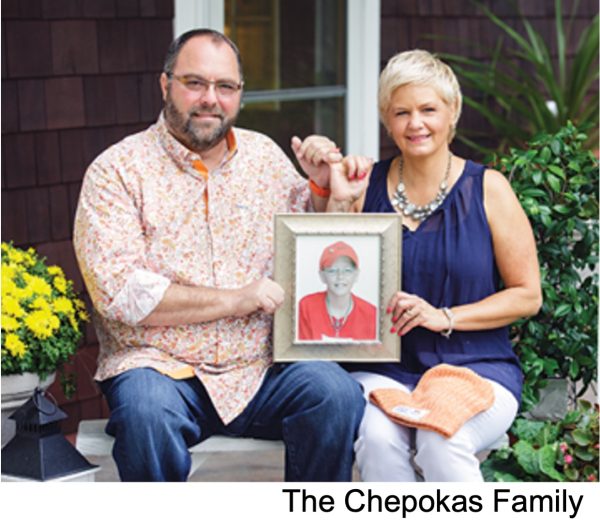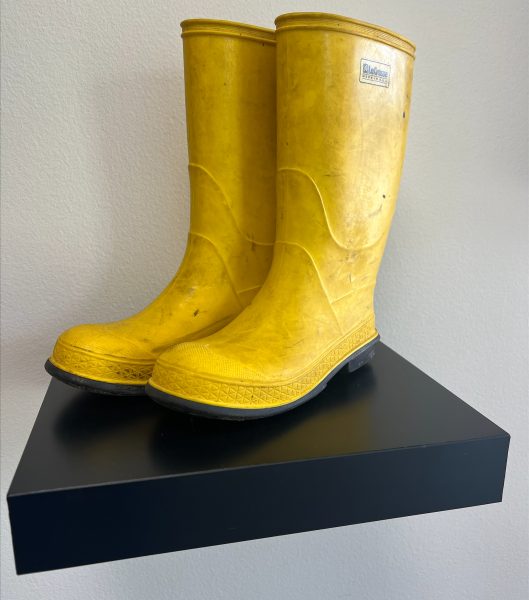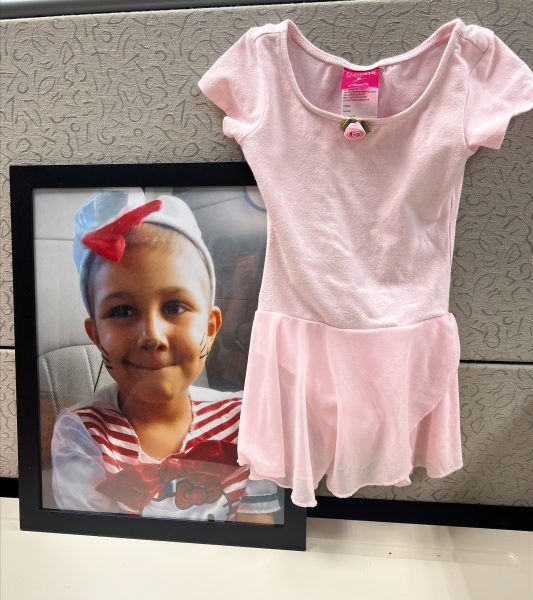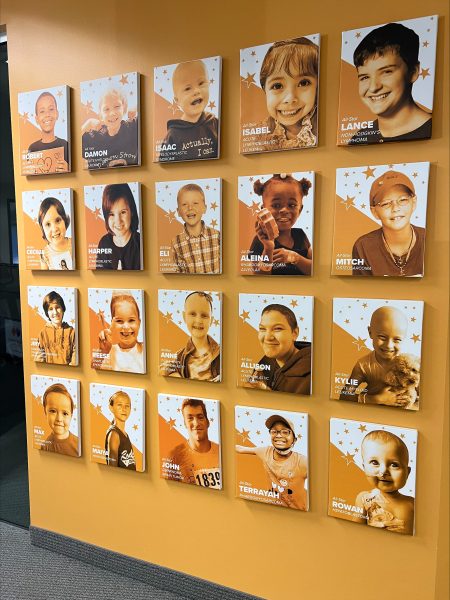As the Executive Director of Pinky Swear Foundation, Erica Neubert Campbell knows one of her main roles is fundraising, but she doesn’t consider herself to be a fundraiser. Instead, she is Pinky Swear’s “Storyteller in Chief.” Erica has found that telling stories and developing a storytelling culture at the foundation has been the best way to build relationships, spark interest and solidify commitment with potential supporters.
 The first story you are likely to hear about Pinky Swear, is their origin story: 9-year-old Mitch overhears a family talking about not being able to afford Christmas presents. Mitch decides to empty his bank account and share all he has with the families who are in the cancer ward at the hospital where he is receiving treatment for bone cancer. Mitch asks his father to ‘pinky swear’ to do the same the next year, after Mitch is gone. You can see the story here – bring tissues.
The first story you are likely to hear about Pinky Swear, is their origin story: 9-year-old Mitch overhears a family talking about not being able to afford Christmas presents. Mitch decides to empty his bank account and share all he has with the families who are in the cancer ward at the hospital where he is receiving treatment for bone cancer. Mitch asks his father to ‘pinky swear’ to do the same the next year, after Mitch is gone. You can see the story here – bring tissues.
Building on a beautiful foundational story, Erica and her amazing team knew they could reach the hearts and minds of donors, volunteers, staff, and community members by improving their own abilities to share powerful stories. Here are two brilliant ways they have done just that:
Story at staff meetings
 At least once a month at staff meetings, the Pinky Swear team does an exercise led by All-Star Engagement Manager, Sue Ratcliff. Sue’s role at Pinky Swear is to connect with families who are battling cancer (who they call “All Stars”). For the team exercise, Sue will share information from an interview with a family, write up a story version, and then each staff member will practice sharing the story. They don’t read it word for word. Instead, they practice telling it in their own words; how they might share it with a potential donor or supporter. This way the story won’t feel like a canned speech but will come from the heart.
At least once a month at staff meetings, the Pinky Swear team does an exercise led by All-Star Engagement Manager, Sue Ratcliff. Sue’s role at Pinky Swear is to connect with families who are battling cancer (who they call “All Stars”). For the team exercise, Sue will share information from an interview with a family, write up a story version, and then each staff member will practice sharing the story. They don’t read it word for word. Instead, they practice telling it in their own words; how they might share it with a potential donor or supporter. This way the story won’t feel like a canned speech but will come from the heart.
Erica says having every member of the staff practice storytelling is a huge part of their culture of philanthropy. “Whether you are an office assistant, accountant, or lead fundraiser, you have an important part to play in fundraising and philanthropy.” Story practice enables every member of the staff to communicate what they do through a story of impact.
The story tour
Sometimes donors and potential donors come by the office at Pinky Swear for a meeting or tour. They want to see what the foundation is all about, but they have a rather small office filled with cubicles. How could this inspire donors?
Lacey Kraft, Vice President of Philanthropy, came up with a game-changing way to give an office tour. She envisioned story stations that were set up strategically to create a flow through their office. By the time you finish the tour, you understand the Pinky Swear Foundation mission and are enamored with not just what they do, but how they do it.
 I got to take an abbreviated version of the tour via Zoom. Erica started by bringing me to “Mitch’s Corner.” This is a collection of Mitch’s memorabilia, like his yellow rain boots, a fireman’s hat and Wheaties box. There is a story about each item.
I got to take an abbreviated version of the tour via Zoom. Erica started by bringing me to “Mitch’s Corner.” This is a collection of Mitch’s memorabilia, like his yellow rain boots, a fireman’s hat and Wheaties box. There is a story about each item.
 Next to Mitch’s Corner, a small pink leotard lays over the back of a kid’s chair next to a picture of Victoria. Victoria’s mom got a phone call about her daughter’s cancer diagnosis right after a dance class. So, they rushed to the hospital with Victoria still wearing her blush pink leotard.
Next to Mitch’s Corner, a small pink leotard lays over the back of a kid’s chair next to a picture of Victoria. Victoria’s mom got a phone call about her daughter’s cancer diagnosis right after a dance class. So, they rushed to the hospital with Victoria still wearing her blush pink leotard.
When a donor interacts with each object, the story of these kids and their families become visceral and emotional. When I saw the mud that is still on the bottoms of Mitch’s yellow rain boots, right away I imagined him splashing and laughing in the rain. I felt connected to him.
Across the office is another station where they put together their Orange Envelope program. This program is often the first connection they make with a family battling childhood cancer. The staff stuff these envelopes with gift cards for immediate needs, a guide to resources and words of support. Right next to the big orange envelopes is a photo of James, so whoever is giving the tour can connect the impact of this program through James’s story.
 The tour isn’t over yet! There is a wall of pictures of several kids the foundation has worked with. The tour guide can ask which picture speaks to you, and then they can tell the story of that kid and their family: who they are, what their goals and dreams are and how Pinky Swear is supporting them every step of the way.
The tour isn’t over yet! There is a wall of pictures of several kids the foundation has worked with. The tour guide can ask which picture speaks to you, and then they can tell the story of that kid and their family: who they are, what their goals and dreams are and how Pinky Swear is supporting them every step of the way.
The Pinky Swear Foundation has been very strategic and purposeful about putting storytelling to work. When asked why that is, Erica makes it sound like a no-brainer. “We realized that’s where we get the most traction. People come and they are genuinely moved.” Erica sheepishly admitted she doesn’t always add a financial ask to the end of the story. Oftentimes, she doesn’t need to. After taking the tour and hearing the stories, people reach out to her to find out more about how they can support the work.
The Pinky Swear team has also found that the families they have served value their stories being seen and heard. They love telling their stories and see that as a way to support the organization that supported them during a difficult time.
If you want your organization to become a storytelling culture, borrow these great ideas from Erica and her team: tell stories at staff meetings and make them part of your office tour. I promise, you will create lasting connections with your supporters. In fact, I pinky swear.
